#615 A floating city sinks
Floating City
by Kerri Sakamoto
Toronto: Knopf Canada, 2018; Penguin Random House, 2019
$21.00 / 9780345809896
Reviewed by Grahame Ware
*
 “One swallow doth not a summer make” – Shakespeare, from Aristotle
“One swallow doth not a summer make” – Shakespeare, from Aristotle
Kerri Sakamoto’s flight south to warmer climes after the publication of One Hundred Million Hearts (Penguin, 2005) has been a multi-year migration. And now that this new swallow of a novel, Floating City, has winged its way back into our literary land, one cannot but wonder: is Sakamoto back and, moreover, are there more “swallows” on the way?
Well yes, in a fashion she’s back, and if there are more to follow I hope that they have more flesh on their winged corpus.
Floating City is melodramatically underwhelming and shows that despite the decade and half gestation, the wait was not worth it. The scattershot story never really takes flight. This may explain why it has taken Sakamoto fifteen years to come up with it. Floating City has the hurried, nattering quality of the big city aunt you see only once in while. Holding court, she sits there with her pearls and fine clothing and, with an air of self-importance, dispatches well-rehearsed vignettes — between sips of tea — to bring you up to date on all the details of her life. Meanwhile, she doesn’t engage or ask questions of you, and her attempts at humour are clumsy at best with no memorable or finely-wrought punch lines, and thus evokes no laughs or even ironic snickers. In short, Floating City is neither a clever nor a wise offering. As you might well understand, I am puzzled by the rave blurbs on the cover of the book.
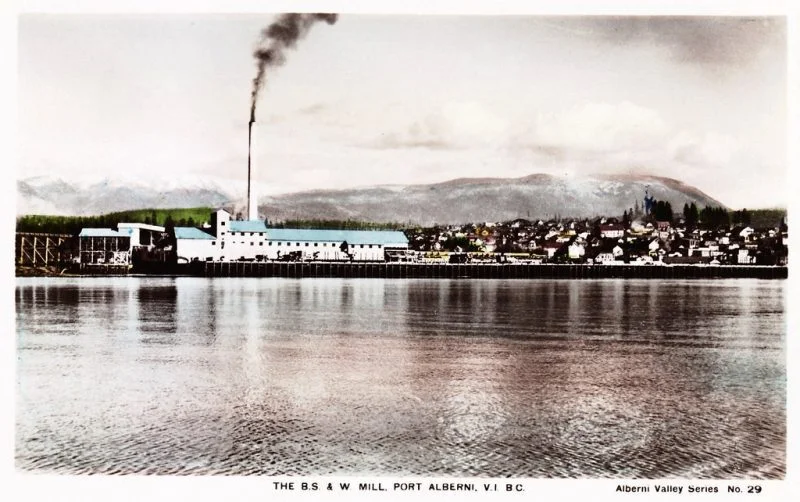
Reluctantly I offer an outline of the plot. It centres on Frankie Hanesaka, who we meet as a hard-working young teen working the shores of Port Alberni on B.C.’s far west coast. There he works with other Japanese Canadians in the pre-internment era. Before Frankie and his family are interned at Tashme, an abandoned mining village between Hope and Princeton, he has started to build a floating house complete with gardens that, he hopes, will attract visitors in the manner of Victoria’s Butchart Gardens. But that dream is dashed with the bombing of Pearl Harbor, the designation of Japanese Canadians as “illegal aliens,” and their internment away from coastal B.C.
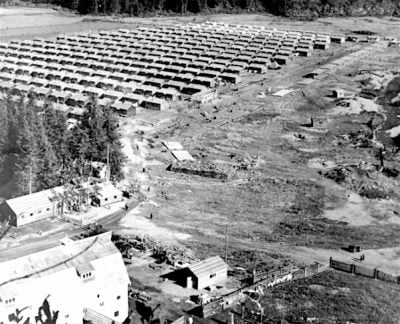
“A vapour,” Frankie thinks to himself while in the graveyard at Tashme, “that was his life so far with nothing to show for itself. Everything sunk to the sea or into the ground. One day he’ll lie beneath stones like these, only in a graveyard for Japs” (p. 51). But this graveyard is also where he has intercourse with a young Japanese internee, Reiko, re-named Rose after she was baptised. They conceive a child from this brief union.
The novel centres around the notion and image of a floating habitat. On different scales and at different points in his life, Frankie uses water to create homes and spaces for things to be.
After his internment at Tashme, where he and his family made it through the hardships with Christian teachings, Frankie travels alone to Toronto to make his way. As fate would have it, he gains employment with a rich Jewish financier, Uri Slonemsky. In his capacity as Slonemsky’s gardener and all-round maintenance man, Frankie exercises his creativity and creates a floating garden of iris. This garden is what draws Hannah, Uri’s agoraphobic wife, out of her room. Hannah — as a prisoner of her affluence (and fears) — is suddenly more alive than she’s been in years. In gratitude, the charitable Slonemsky introduces Frankie to an old friend, none other than the visionary architect Buckminster Fuller.
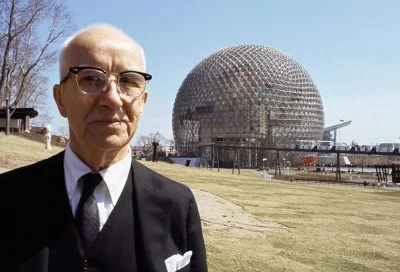
For one of the dominant threads of the novel, it would seem that Sakamoto has drawn on the real-life collaborations of Fuller and his former student-architect Shoji Sadeo, especially their design of Tetrahedron City (see MoMA retrospective, 1968) for Japanese financier Matsutaro Shoriki,[1] the left-wing journalist who later became a right-wing media tycoon. The city complex, according to Wikipedia, “was designed to accommodate one million citizens in 300,000 apartment units and included a huge interior harbour in Tokyo. Tetrahedron City was conceived as an efficient and sustainable living-space alternative. Its massive size and low-cost was made possible by an aluminum octet truss system. By floating on the sea, it didn’t take up any space on land.” However, the whole Buckminster Fuller character gets mangled in the process of Sakamoto’s interpolation and “Buckie” Fuller’s involvement with Frankie and Uri. In short, it just doesn’t work on a number of levels.
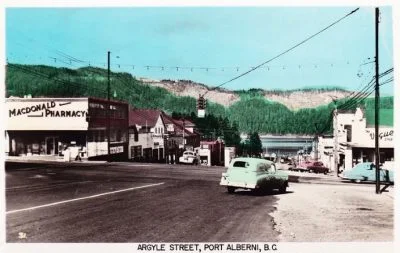
In terms of Frankie’s gardening experience, we do learn that at Port Alberni Frankie ordered seeds through the local hardware store for “seaside planting” (p. 35), and that he was able, by dint of his own energy, to build his first floating garden on Alberni Inlet before internment; but we never quite learn where Frankie acquired the skills that made it possible for him – as the Slonemskys’ gardener — to create a floating garden of irises (presumably Japanese iris, Iris ensata). And, by the way, Kerria japonica (p. 34), while a member of the rose family, is not a rose per se and certainly not a Japanese rose! It is most usually referred to in common parlance as the Japanese Marigold bush. How did the editors let that gaff slip by?

It becomes clear that Frankie’s religious lessons at Tashme have fallen on deaf secular ears. He tunes out the theocratic noise of the church, thus allowing him, with Uri’s assistance, to become an unabashed “developer.” Hannah and Uri provide financial help so that he might afford his own home and make his mark; and then, with “inside info” from Uri, he buys flooded homes at pennies on the dollar and sells them back to the city of Toronto for a considerable profit, thus providing seed money (as it were) for his multi-residential project. This scenario provides an opening for Frankie, the hustler, to fry much bigger fish, but his plan to become a developer goes off the rails.
He changes his name — in effect, de-Nipponifies his surname from Hanesaka to Hanes — and builds a shoddy mega-apartment. Finally, totally depressed, he goes to Centre island (which itself is under threat of the bulldozer) and gets Anne Smolensky (daughter of Uri and Hannah) with whom he has had a lingering fantasy, pregnant; they have a child; Frankie abandons his developer life and changes his name back to Hanesaka.
That’s it. End of novel.

For my sensibilities, this fiction/non-fiction character friction grates on the development of the overall narrative as it flits, lurches, and stumbles from chapter to chapter. And it runs deeper than that. The scenes are just too sketchy for any drama or allegory to develop gracefully. The storyline is like that of a water skeeter — it stays afloat on the water not just because it is so light but due to the surface tension of water itself. In other words, the water of the subject should be enough to hold up this light-bodied, long-legged narration, but it only just does so. When the water begins to move, the skeeter heads to the shore or drowns.
So — like the wistfully remembered and slapped-together waterfront home that Frankie made in Port Alberni; and like his later vision, inspired by that memory, of a re-imagining of a floating city in Toronto co-inspired by Bucky Fuller — the narrator uses intuition and consociation to float as well. Jane Jacobs, noted urban planner, would not be impressed with either Uri or Frankie despite Sakamoto’s invocation and use of Fuller as a featured character.
Unlike Kazuo Ishiguro’s An Artist of the Floating World (1986), Floating City is not a first-person narrative and lacks the authorial voice, connective lyrical tissue, and structural authenticity of Ishiguro’s classic. As readers, we are not immersed in enough detail and character development for enough displacement to make flotation possible.
 The absence of gravitas in Sakamoto’s novel isn’t just a device of “form follows function.” A screenplay adaptation might suit this work better; as a novel it contains too many strands in need of a good pruning of deadwood and dead ends. In addition, those quiet, kinetic images of film might well prop up the paucity of a deep narrative and, in effect, become a narrator. This would be a good thing; and considering that Sakamoto co-wrote a screenplay (with Rea Tajiri) in 1997 for the film Strawberry Fields, a movie script containing a collage of images and symbols (albeit drawn from what is currently a jangled, wannabe metanarrative) might be lassoed and used more effectively than in the novel under review.
The absence of gravitas in Sakamoto’s novel isn’t just a device of “form follows function.” A screenplay adaptation might suit this work better; as a novel it contains too many strands in need of a good pruning of deadwood and dead ends. In addition, those quiet, kinetic images of film might well prop up the paucity of a deep narrative and, in effect, become a narrator. This would be a good thing; and considering that Sakamoto co-wrote a screenplay (with Rea Tajiri) in 1997 for the film Strawberry Fields, a movie script containing a collage of images and symbols (albeit drawn from what is currently a jangled, wannabe metanarrative) might be lassoed and used more effectively than in the novel under review.
Alas, I must pan this twitchy, long-winded, and unconvincing tale from Sakamoto. I feel she has demonstrated with Floating City that she is but a wordsmith whose themes of the Japanese diaspora now seem diluted. And, like Shakespeare’s swallow, it would seem that we are still waiting for summer from Sakamoto.
*

Grahame Ware is a writer and reviewer living on Gabriola Island.
*
The Ormsby Review. More Books. More Reviews. More Often.
Publisher and Editor: Richard Mackie
The Ormsby Review is a journal service for serious coverage of B.C. books and authors, hosted by Simon Fraser University. The Advisory Board consists of Jean Barman, Robin Fisher, Cole Harris, Wade Davis, Hugh Johnston, Patricia Roy, David Stouck, and Graeme Wynn. Scholarly Patron: SFU Graduate Liberal Studies. Honorary Patron: Yosef Wosk. Provincial Government Patron since September 2018: Creative BC
“Only connect.” – E.M. Forster
Endnotes:
[1] “Shoriki created so much of what defines [Japan] today that it is a wonder he is not as well known as, say, William Randolph Hearst (one of his big Western admirers) is in America. Shoriki was as much the pugnacious, brooding, manipulative and visionary “Citizen Kane” as Hearst.” (The Economist, December 22, 2012 https://www.economist.com/christmas-specials/2012/12/22/japans-citizen-kane. More dramatically, Shoriki was a CIA spy promoting nuclear power through the granting to him in 1953 of the first licence in Japan for a TV station, which led to the establishment of Nippon TV, a pro-US TV station. As the instigator of Japanese baseball, Shoriki was the perfect man to promote nuclear energy as an option for Japanese electrical power utilities. See Peter Kuznick, Japan’s nuclear history in perspective: Eisenhower and atoms for war and peace, April 13, 2011, The Bulletin of the Atomic Scientists.
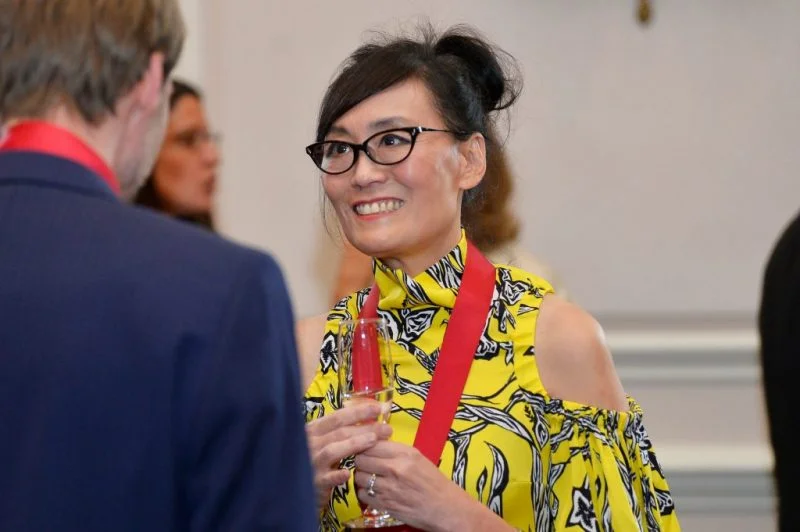
3 comments on “#615 A floating city sinks”
Wow. If you’re going to trash a book that has earned considerable acclaim and multiple awards, you’d better back up your opinion with analysis and insight, rather than empty snark.
Ware begins with an irrelevant Shakespeare quote, and then wastes three paragraphs telling us about his opinion with nothing to back it up. When he finally deigns, “reluctantly” to summarize the plot, he makes it sound quite interesting – but “for his sensibilities” it didn’t work. Why? Something about a mosquito drowning.
But apparently Ware is sure the late Jane Jacobs would not have enjoyed it. There’s nothing like imaginary criticism. Forgive us if the praise from living Canada Council, Toronto Book Awards and Writer’s Trust of Canada judges holds a bit more weight.
Finally, what’s with the weird comparison of Sakamoto’s ‘Floating City’ to Ishiguro’s ‘An Artist of the Floating World?’ Oh, right: both authors have Japanese heritage and use the word ‘floating’ in their titles. What shallow prejudice.
‘I am puzzled by the rave blurbs on the cover of the book,’ he writes. Yup. You sure didn’t get it. Suggestion for next time: You don’t need to be a know-it-all. Offer your analysis, and then let the reader make up their own mind.
Comments are closed.